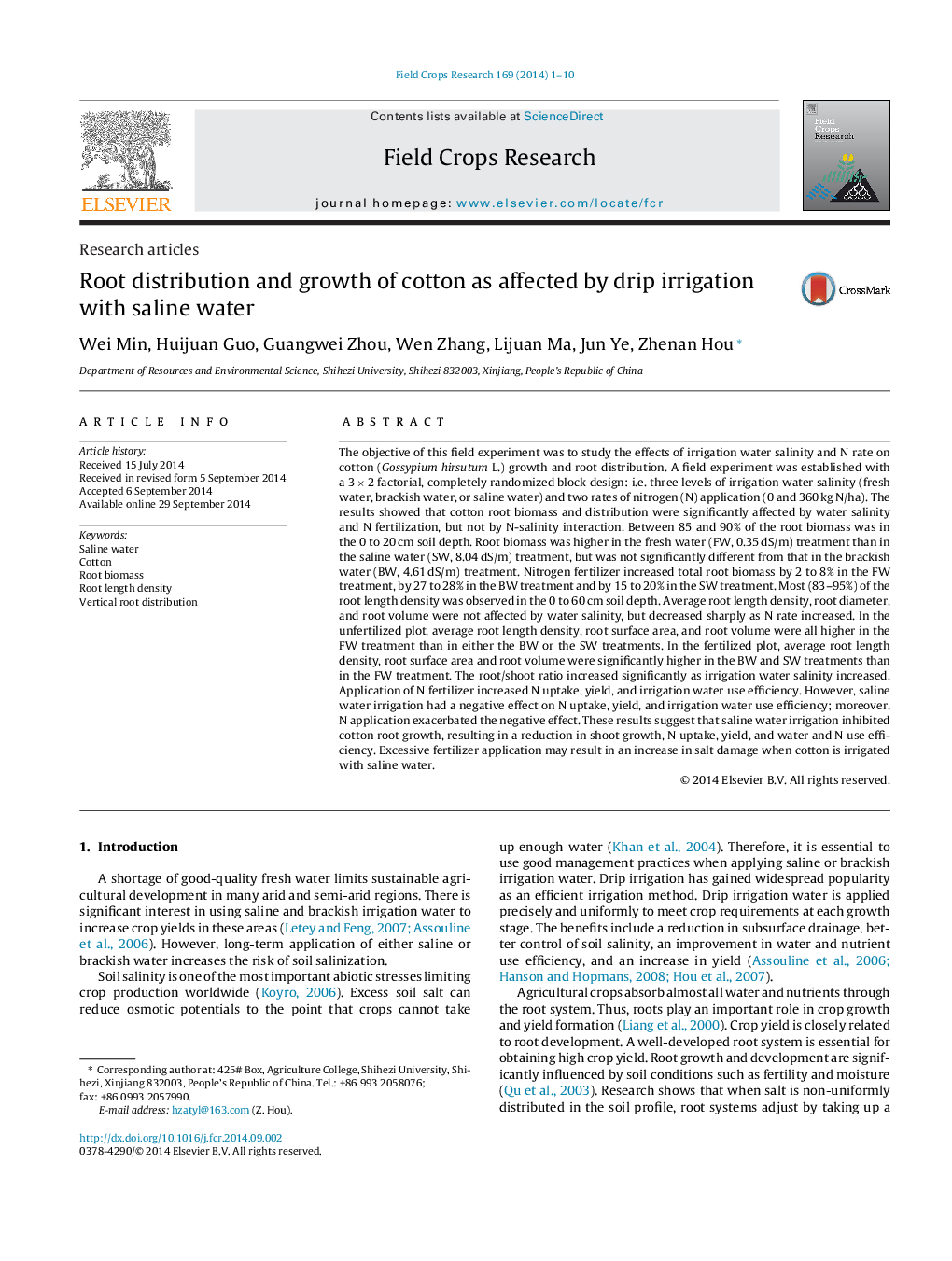| کد مقاله | کد نشریه | سال انتشار | مقاله انگلیسی | نسخه تمام متن |
|---|---|---|---|---|
| 4509942 | 1624694 | 2014 | 10 صفحه PDF | دانلود رایگان |
• Saline water irrigation inhibited cotton root growth.
• Water salinity had no effect on average RLD, diameter, and volume.
• Nitrogen application reduced RLD, surface area, volume, and diameter.
• Brackish or saline water irrigation significantly increased root/shoot ratio.
• The negative effects of saline water may become worse if the crop is overfertilized.
The objective of this field experiment was to study the effects of irrigation water salinity and N rate on cotton (Gossypium hirsutum L.) growth and root distribution. A field experiment was established with a 3 × 2 factorial, completely randomized block design: i.e. three levels of irrigation water salinity (fresh water, brackish water, or saline water) and two rates of nitrogen (N) application (0 and 360 kg N/ha). The results showed that cotton root biomass and distribution were significantly affected by water salinity and N fertilization, but not by N-salinity interaction. Between 85 and 90% of the root biomass was in the 0 to 20 cm soil depth. Root biomass was higher in the fresh water (FW, 0.35 dS/m) treatment than in the saline water (SW, 8.04 dS/m) treatment, but was not significantly different from that in the brackish water (BW, 4.61 dS/m) treatment. Nitrogen fertilizer increased total root biomass by 2 to 8% in the FW treatment, by 27 to 28% in the BW treatment and by 15 to 20% in the SW treatment. Most (83–95%) of the root length density was observed in the 0 to 60 cm soil depth. Average root length density, root diameter, and root volume were not affected by water salinity, but decreased sharply as N rate increased. In the unfertilized plot, average root length density, root surface area, and root volume were all higher in the FW treatment than in either the BW or the SW treatments. In the fertilized plot, average root length density, root surface area and root volume were significantly higher in the BW and SW treatments than in the FW treatment. The root/shoot ratio increased significantly as irrigation water salinity increased. Application of N fertilizer increased N uptake, yield, and irrigation water use efficiency. However, saline water irrigation had a negative effect on N uptake, yield, and irrigation water use efficiency; moreover, N application exacerbated the negative effect. These results suggest that saline water irrigation inhibited cotton root growth, resulting in a reduction in shoot growth, N uptake, yield, and water and N use efficiency. Excessive fertilizer application may result in an increase in salt damage when cotton is irrigated with saline water.
Journal: Field Crops Research - Volume 169, December 2014, Pages 1–10
